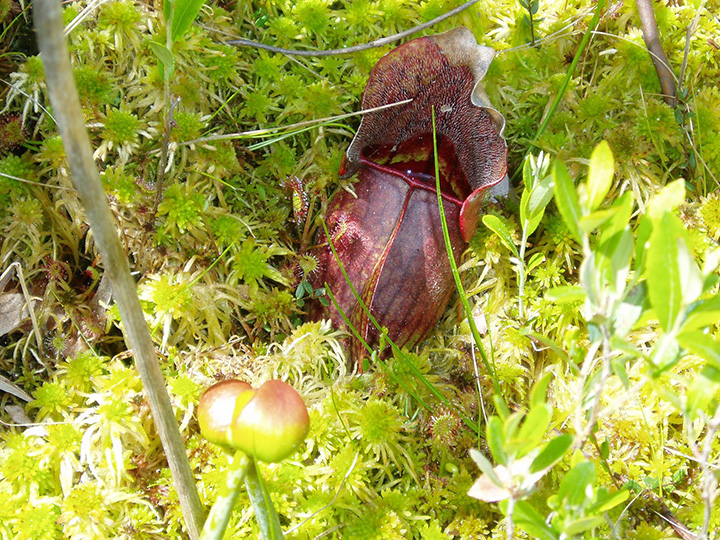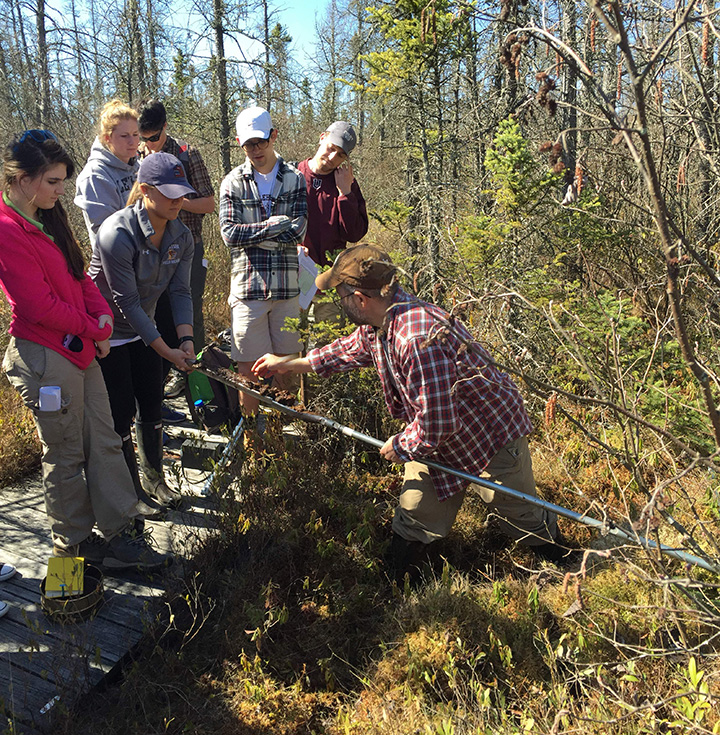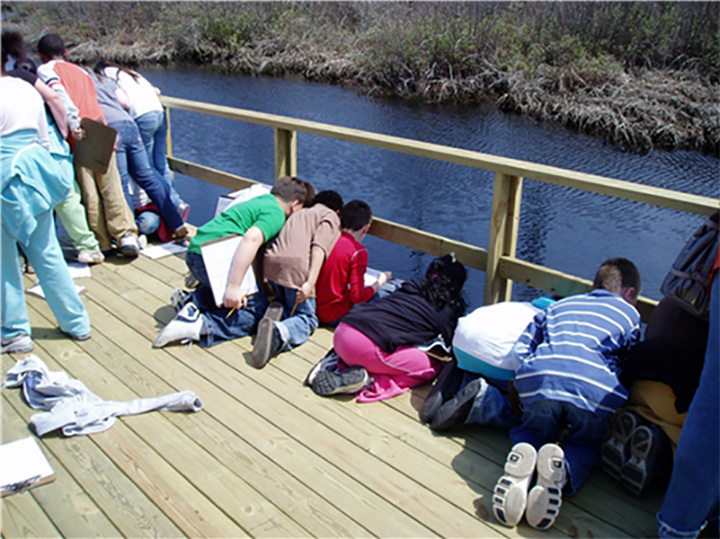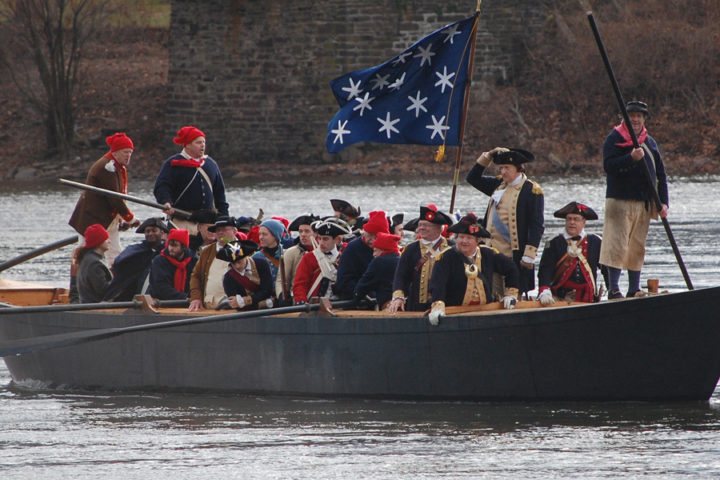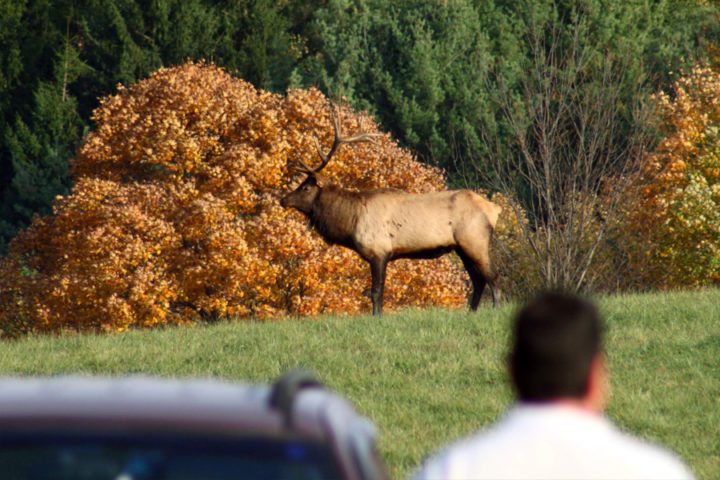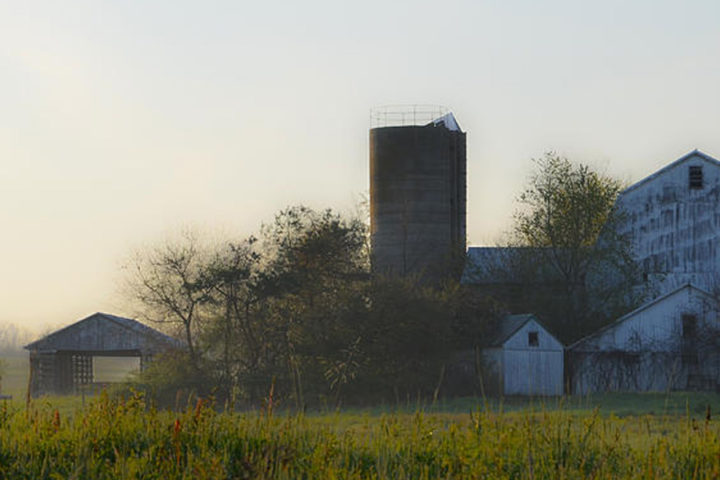On spring days, the Tannersville Cranberry Bog belongs to fourth-graders. In the bog they see their lessons come alive. They touch plants in the dense foliage that they only knew from pictures and words. The young explorers have no idea of the struggle to save the wetland and to open it to the public. They just think it’s cool.
“Show a fourth-grader an insect-eating plant and that’s a lesson easily taught,” says Roger Spotts, director of the Monroe County Environmental Education Center.
Fourth-graders in four Monroe County school districts have the bog written into their curricula. Steve Wynings, a student in Debbie Harris’ class, is learning his lessons. “It’s pretty cool,” says Steve as he inspects the flower of a carnivorous plant. “The pitcher plants have these little hairs inside-when bugs go in they can’t get back out.”
This kind of wonder saved the bog for today and for future generations: The bog could easily have been a casualty of development if it weren’t for a group of enthusiastic, committed people.
One of The Nature Conservancy’s first purchases in Pennsylvania, the bog is used by teachers, scientists, photographers and nature lovers. But the bog is more than a wetland and more than a school classroom. It is part of the local culture, a part of the community.
“There are few people in the area who haven’t been to the bog,” said Bud Cook, director of The Nature Conservancy’s Northeastern Pennsylvania office. “I can’t tell you how many people say, ‘I’m really embarrassed. I haven’t been to the Tannersville Bog. My kids keep bugging me to go.’”
The appeal of this mass of peat, murky water and spiky spruce, extends beyond the Poconos. The bog was designated a National Natural Landmark in the 1960s, earned ink in a National Geographic publication, and was studied by Ecuadorian park officials in the 1990s.
The Tannersville Cranberry Bog was once a huge glacial lake. Since the ice receded 10,000-15,000 years ago, approximately 40 feet of peat has accumulated on the floor of what was once the lake. Today, the bog stands out in contrast to the surrounding forests. It is a world of sphagnum peat moss hosting beautiful plants like calla lilies, orchids, gold thread and the carnivorous sundew and pitcher plants, with smatterings of shrubs like Labrador tea, leatherleaf, sheep laurel, bog rosemary and swamp azalea. The bog also provides habitat for many mammals including bears, otters, bobcats, beavers, porcupines, minks and snowshoe hares.
Inspiring Art and Science
Jerry Keltz grew up near the bog, yet never paid attention to it.
“We weren’t allowed in there as kids,” he said, laughing. “My mom told me that there was quicksand. We fished Cranberry Creek at night for eels and catfish, but not in the bog proper.”
A lot of life took place between Jerry’s mother’s warnings and his discovery of the bog’s wonders-a tour in the Air Force, a long career and settling down with family in Northampton County. When he retired, he started volunteering with The Nature Conservancy, leading tours and documenting plant life at their preserves. It was this involvement that led him home and into the bog. For six years, Jerry traveled to Tannersville every two weeks to catch plants in bloom. He photographically documented every plant species in the bog. His photographs have been featured in Conservancy publications.
“I was always in love with nature, but I was too busy while working to enjoy it.”
Another local boy fell so hard for the bog that it shaped his career, and in turn, he helped to protect it. William Niering grew up a butcher’s son in rural Scotrun with a fascination for the bog and its life. After serving three years in World War II, Niering returned to Pennsylvania. He studied botany at Penn State. His Master thesis delved into what he loved: the flora of Monroe and Pike counties. Niering authored numerous books on wetland ecology and became a renowned wetland expert.
“Even though he was teaching at Connecticut College, anytime he came home he went to the bog,” Keltz said.
Niering also fought for the preservation of natural areas, becoming a volunteer with The Nature Conservancy.
The Nature Conservancy
The Nature Conservancy had just incorporated in 1951. With two or three employees and a thousand members nationwide, there were only hints that the organization would grow to protect more than 117 million acres of the world’s most special places. Although settled as a professor in Connecticut, Niering came home frequently to lead an effort to protect the Tannersville Cranberry Bog. He organized a group of concerned locals who did the legwork and raised the money to finance the protection effort. In 1956, these volunteers helped TNC purchase the first 63 acres of the bog.
“They were scrambling to protect the place they loved. They wanted to insure its protection beyond their own lives. With The Nature Conservancy, they could do it,” Cook said.
The local people formed a stewardship committee to maintain the property.
Stewardship
The bog had great educational value and a local college was interested in the property. The Nature Conservancy agreed to transfer the property to the college in the 1960s, under the strict condition that it be maintained as a natural area. The college accepted. But over time, the task of caring for such a sensitive ecosystem proved too cumbersome for the school. The bog was being damaged by too much traffic and garbage dumping. Invasive plants-species not native to the bog and far from their natural predators — were crowding out natives, damaging the unique ecosystem. By 1979, parts of the bog were a mess.
Frustrated with the situation, local Nature Conservancy volunteers approached the leaders of TNC’s newly formed Pennsylvania Chapter with a plea to do something. TNC went to the school, wondering if they would need to enforce a reverter clause in the transfer. There was no need, as the college was happy to give the property back. The property was chained and closed off to stop new damage. And then TNC’s volunteers began working for a long-term solution: How could they both protect the bog’s rich biodiversity and open it to the public?
Cook chokes up when talking about TNC’s band of dedicated volunteers: “They were so emotionally involved. There was a bond among those who bled to make things better at the bog.”
With great effort, they crafted and implemented a plan to provide public access and on-site education while protecting the resource that made recreation and education at the preserve desirable. The Monroe County Environmental Education Center joined the endeavor, creating an education program that it manages to this day. The Nature Conservancy, its volunteer stewardship committee and the Monroe County Environmental Education Center have now been successfully managing the preserve for more than 20 years.
A Special Place
Today, a floating boardwalk — named for William Niering — brings visitors into the center of the bog. The wooden plank structure rests on pontoons atop the 40-foot deep peat moss and protects the bog’s plants from trampling. At their guide’s prompting, Debbie Harris’ fourth-graders enthusiastically jump up and down, rocking the boardwalk like a boat floating in thick soup. The pinkish white flowers of bog rosemary embrace the edge of the boardwalk, peeking up at the kids. The guide notices the blooms.
“Botanists from far away travel to Tannersville just to see this plant,” the guide tells the children. The entire class bends its collective head closer to the rosemary.
“This is another world — a world not very many people get to see,” Debbie Harris says. “No one would get to see it at all if it weren’t for The Nature Conservancy building this boardwalk and protecting this land.”


